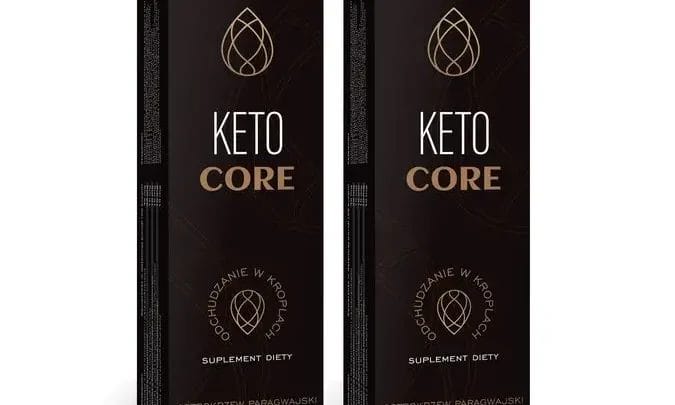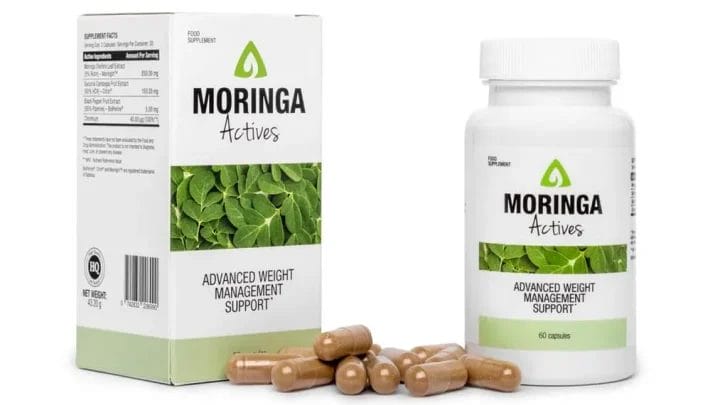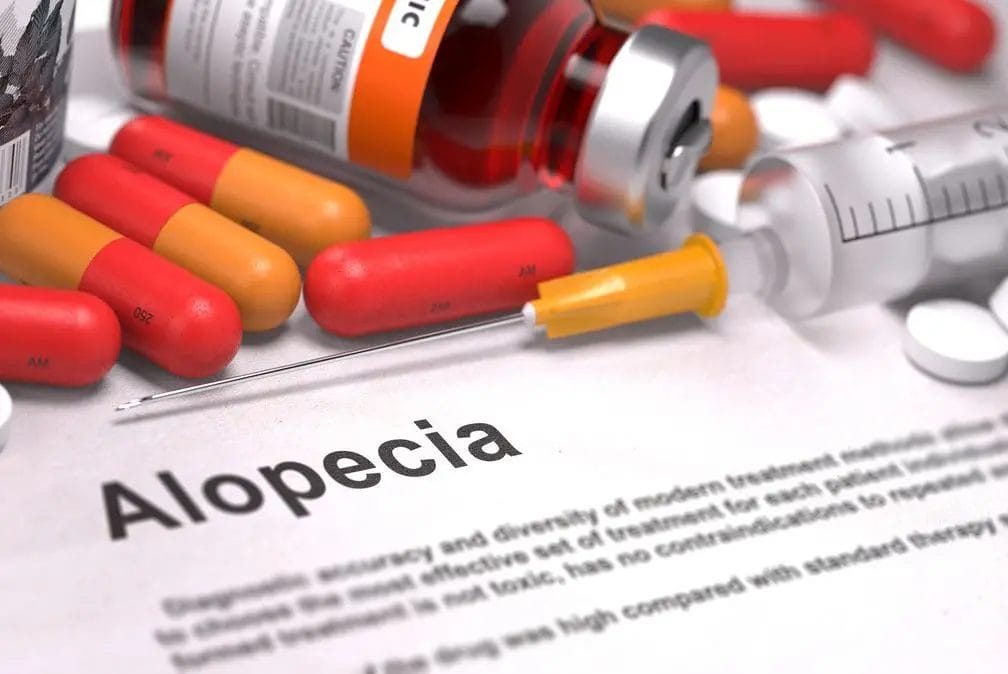
Minoksydyl or finasteride – pharmacological treatment of alopecia.
Hair loss is considered a natural process, but only if you lose a maximum of 100 to 150 hairs a day. Any more than that is a sign of a problem, mistakes in daily hair care or diseases developing inside the body, of which hair loss is one of the symptoms. Sometimes it can be so intense that it even leads to complete baldness, unless a proper treatment is implemented beforehand.
There are many ways to stop and, in many cases, reverse this process to a large extent. Natural methods, the use of plants and herbs that have a beneficial effect on the health of hair and scalp, are very popular. An equally large number of people choose pharmacological treatment of baldness, in which mainly two substances are used, minoxidil and finasteride.
Contents
Hair loss – what are its causes?
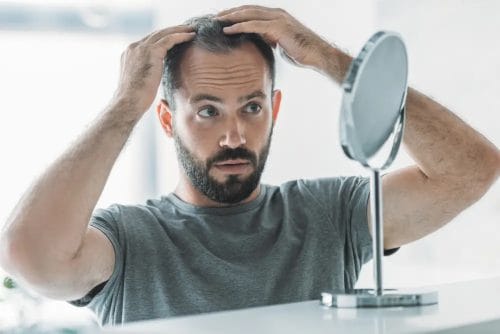
The use of these two strong pharmaceuticals has its advantages and disadvantages, which we will present later in this text, but before that it is worth knowing why at some point our hair begins to fall out. The causes of hair loss are varied and their diagnosis can take a lot of time and should be dealt with by a qualified person, dermatologist or trychologist .
Only they have the appropriate and extensive knowledge to diagnose possible diseases causing it, which in extreme cases may even require a hair transplant. Many causes of hair loss depend directly on us and are the result of our own negligence. If you want to keep a beautiful, thick and naturally shiny hair style for a long time you have to pay attention to
Observing the right diet
Few people realise that improper diet is not only a cause of overweight and obesity, it may also cause excessive and accelerated balding. In some fast foods or highly processed foods, there are missing ingredients essential for nourishing the hair and scalp, which are undoubtedly:
- vitamin A, which determines the proper formation of cells forming hair, which grow stronger and denser, deficiencies of this vitamin become the cause of disruption of the functioning of hair follicles, alopecia areata and deterioration of vision;
- VitaminB2, riboflavin, prevents hair loss, gives the hair vitality and restores its shine, reduces sebum secretion that can lead to seborrheic alopecia;
- Vitamin B3, niacin, caring for the proper structure of the hair shaft, providing it with energy necessary for intensive growth, improving blood supply to the scalp;
- VitaminB5, pantothenic acid, found in many hair-care products, strengthening and smoothing the hair structure, restoring its pigmentation and preventing graying. It also has a beneficial effect on skin, moisturizing it to the deepest layers, delaying aging processes, preventing inflammation and skin diseases, such as acne ;
- vitamin B6, pyridoxine, accelerates new hair growth;
- vitaminB7, biotin, which supports new hair growth and prevents hair loss, reduces seborrhea and dandruff, oxygenates and nourishes scalp cells;
- Vitamin C, ascorbic acid, essential for the whole organism, not only for the condition of our hair, a strong antioxidant which even “sweeps” free radicals, reactive oxygen species (ROS) damaging cells. It participates in the synthesis of collagen, the building material of tissues, including hair, and takes care to maintain a proper level of iron, an element necessary to stop baldness;
- silicon, an element which, in combination with other nutrients from food, strengthens weakened hair follicles and roots, while preventing excessive hair brittleness
- Zinc, the number two element for healthy hair and scalp, which is needed above all for the formation of keratin, a specific protein which, along with collagen, is another building material of hair;
- selenium, which ensures not only a strong hair structure but also its elasticity and thanks to its anti-inflammatory and anti-fungal properties prevents infections and inflammations of the scalp.
Daily Hair Care Mistakes
Another cause of hair loss that makes it necessary to implement a pharmacological treatment of alopecia with minoxidil or finasteride are mistakes made during daily hair care procedures. This also should not be underestimated, and specialists, including the aforementioned trichologists, recommend:
- careful selection of shampoos and conditioners for hair, their composition, which should absolutely be natural, free from such substances as silicone, SLS-y, or particularly harmful parabens;
- not tying up long hair with an elastic band when it is subjected to hours of pressure causing it to weaken and increasingly fall out;
- not using hair straighteners, which heat them up to very high temperatures, which affects their condition, destroys the structure, making them break, crumble and “come out” in handfuls. Similar negative effects give the use of a hair dryer, it is better that the hair after washing dries naturally.
Diseases that lead to baldness
These include co-morbidities, often remaining undetected, which are manifested by rapid thinning of the hair, autoimmune diseases, weakened immune system, thyroid disease, its hyperfunction, hypothyroidism or Hashimoto, incurable inflammation. Equally negative effects are brought by severe stress, depression and other states of nervous tension. Of course, baldness can also be caused by typical skin diseases, and the most commonly indicated are:
- seborrheic dermatitis;
- chronic mycosis fungoides, also of the scalp;
- Atopic dermatitis (AD);
- chronic suppurative folliculitis;
- psoriasis;
- skin tumors.
Pharmacological treatment of baldness – why it is used
As you can see, there are many causes of baldness, so it is not surprising that most ill people want to use pharmacological treatments, effective but not entirely safe. This is natural, after all, when we fall ill, the first thing that comes to our mind is a visit to a specialist for the treatment of a given disease. Only they can assign drugs available only on prescription, and these include those whose main active ingredients are minoxidil or finasteride.
So it is worth to characterize them a little bit more, to know the advantages of their use and the side effects they cause. Both compounds are used in the treatment of different types of baldness, but the highest, confirmed by research effectiveness in relieving symptoms of androgenic alopecia. It may have different causes, but usually mention genetic, inherited tendencies from older family members.
Androgenetic alopecia, what it is and what causes it
When we talk about androgenic alopecia, we mean one of the most difficult to treat varieties of this disease, associated with hair growth phases. They become sensitive to so called androgens, specifically one of their variants, dihydrotestosterone, better known under the abbreviated name DHT.
It is formed by converting the sex hormone, testosterone, which starts to be affected by the enzyme 5 alpha-reductase. This new form begins to negatively affect the hair follicles, initially weakening them, then leading to their gradual shrinkage, and finally death. If not treated properly, hair loss can be complete and irreversible.
Minoxidil or finasteride, which one to use
One way to treat androgenetic alopecia is to use potent pharmaceuticals that are included in many drugs, including rubs and tonics to stop the development of this disease. Two in particular are used, which differ from each other in their properties, effects and side effects that they unfortunately cause.
Minoksydyl – properties
Its unpolished, scientific name is minoxidil , and it is it that we find, reading the composition of the alopecia drug that we want to take. This is an organic chemical compound invented by the American pharmaceutical company Upjohn Company in the 1950s, being a derivative of dihydralazine. In the assumption of the inventor and the manufacturer it was initially to be a preparation supporting the treatment of stomach ulcers, but it turned out that it has the highest effectiveness on hypertension. Only after some time it was noticed that one of its “side effects” was accelerated hair growth, so it was soon included in preparations intended to counteract accelerated baldness.
Minoksydyl – action
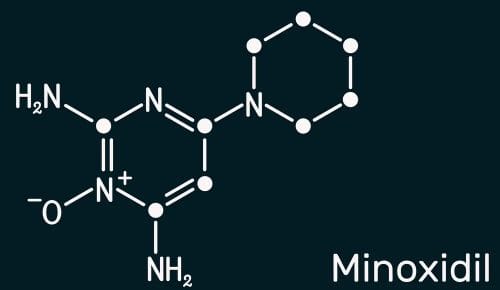
The action of minoxidil against hair loss is based on the targeted induction of the hair growth phase, i.e. anagen. At the same time, it improves blood supply to the scalp thanks to its properties to dilate small blood vessels. It is effective even on the level of almost 48 per cent and in such a number of men new hair growth was observed.
It increases the blood flow to hair follicles and hair bulbs, thus stimulating them to work more intensively and providing them with necessary nutrients. Such properties of minoxidil predispose it to be used in the treatment of hereditary alopecia, i.e. its androgenic variant.
Minoksydyl – side effects
The high effectiveness of minoxidil-based preparations encourages its use, but before we do that we need to know all health consequences of such a decision. This is a chemical compound that can not be used by everyone, and the most common contraindications are:
- hypersensitivity to this particular substance;
- wounds and irritations on the head that can increase the absorption of minoxidil, leading to an overdose;
- pregnancy and breastfeeding.
It is also worth noting the possible side effects, of which there are also quite a few, such as:
- itching and irritation of the skin at the site of application of the active substance;
- Increased hair loss, especially during the first 2 months of treatment;
- skin allergic reactions, rashes or hives;
- breathing problems;
- a feeling of tightness in the chest;
- swelling involving the face, mouth, lips, tongue, hands and feet;
- sudden uncontrolled weight gain;
- tachycardia, i.e., an increase in heart rate even above 100 beats per minute;
- an increase in high blood pressure;
- dermatitis and excessive hairiness;
- dandruff.
Finasteride – properties
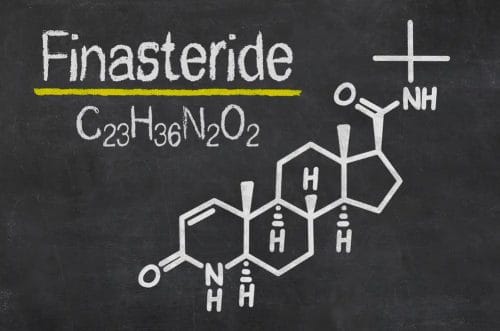
Another compound used in the treatment of genetic baldness is finasteride. It is an artificially produced chemical compound also commonly included in many drugs, whose task is to inhibit the conversion of testosterone into its harmful and more active form, dihydrotestosterone (DHT). As an inhibitor of the enzyme 5 alpha-reductase, finasteride works really well, acting with a potency five times greater than the basic form of DHT.
So it completely dominates it, and it starts to be responsible for all the processes leading first to stopping hair loss and then to new hair growth. They grow in different parts of the head, but the highest effectiveness is obtained on the top of the head and around the temples. Effectiveness here is estimated at up to about 80 percent and in such a number of men managed to stop and reverse the negative effects of androgenetic alopecia. Interestingly, it is also used in the treatment of benign prostatic growth, alleviating many of its symptoms.
Finasteride – possible side effects
Even if we provide finasteride in the dose recommended by its manufacturer, we still have to reckon with its side effects, side effects affecting up to 10 percent of cases, such as:
- mood swings;
- temporary erectile dysfunction and decreased libido;
- an increased risk of infertility;
- risk of testicular shrinkage;
- the possibility of developing gynaecomastia, or breast enlargement in men;
- skin irritation, rash, and hives;
- swelling of the face, mouth or throat, which may make breathing difficult;
- depression;
- chest pain.
It is also banned for pregnant women, who are harmed by even minimal doses of it, increasing the risk of fetal damage.
Pharmacological treatment of baldness – is it really worth it
The effectiveness of pharmacological methods of stopping hair loss cannot be faulted much, just like the two most commonly used substances. However, it is worthwhile to analyse the associated risks of unpleasant side effects beforehand and consider whether it is really worth exposing oneself to them.
After all, there are alternative ways, using preparations with safe plant extracts such as nettle , field horsetail and sabal palm (saw palmetto) . They, too, can help restore the lushness of our thinning hair and the ranking of the best tablets against baldness can be found at the link below.
SEE THE RANKING OF THE BEST TABLETS FOR BALDNESS
Sources:


